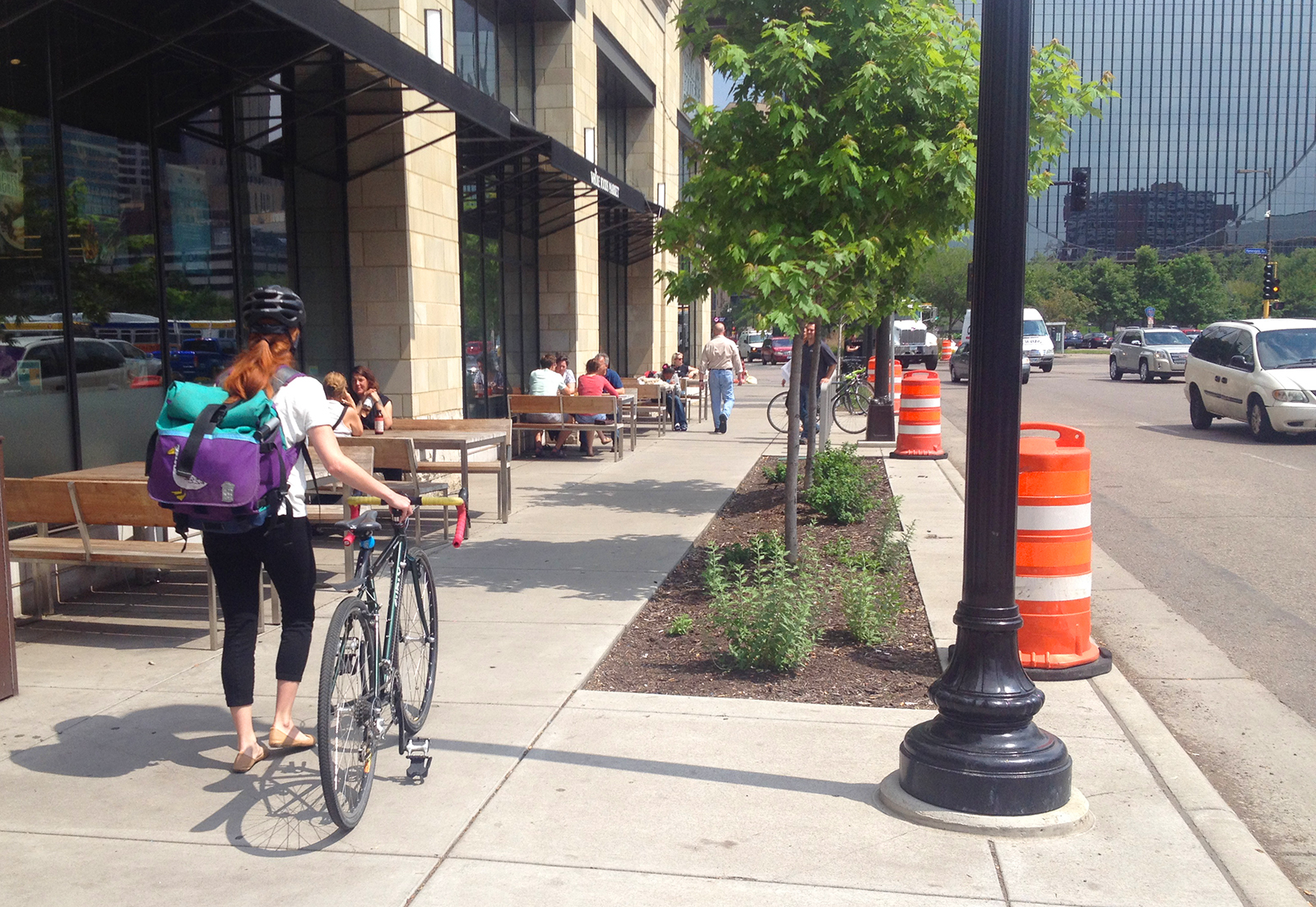9. Complete neighborhoods: In 2040, all Minneapolis residents will have access to employment, retail services, healthy food, parks, and other daily needs via walking, biking, and public transit.

The Minneapolis Climate Action Plan adopted in 2013 provides a road map toward reducing greenhouse gas emissions, with targets of 15 percent by 2015 and 30 percent by 2025 compared with 2006 levels. In 2014, Minneapolis adopted a vital long-term goal to reduce greenhouse gas emissions by 80 percent by 2050.
In 2015, on-road transportation accounted for 26 percent of the city’s greenhouse gas emissions. Today, over 90 percent of passenger miles traveled in Minneapolis are in personal automobiles. Even with the adoption of electric cars, a 38 percent reduction in passenger miles traveled by automobile is needed to achieve the 80 percent reduction of greenhouse gas emissions by 2050.
Nationally, 45 percent of daily trips are taken for shopping and errands. Residents in many parts of the city have no choice but to drive long distances to access regular daily goods and services such as grocery stores. In most of the city, demand for retail is much higher than supply, indicating an opportunity to make retail more convenient for everyone and thereby reduce car trips and greenhouse gas emissions. The city also has 11 low-income census tracts in which residents live more than a mile from a full-service grocery store.
Currently 97 percent of Minneapolis residents live within a 10-minute walk of a park, but small pockets of the city still lack easy access to such a critical component of a livable urban environment. Some of these gaps are in places where new residential neighborhoods are emerging. As the city’s population grows, it will be important to continue evaluating park access and to build new parks in underserved areas.
To achieve the goal of access to daily needs via walking, biking and public transit, the City of Minneapolis will allow more housing to be built in places close to transit, retail services and employment areas. The City will designate additional areas for commercial uses in parts of the city that are well-served by public transportation and where demand for retail goods and services exceeds supply. The City will support thriving business districts and corridors that build on cultural assets and serve the daily needs of Minneapolis residents. And the City will work to build parks in underserved areas to ensure that all residents live within a 10-minute walk of a park.
Achieving this goal also requires changes to the transportation system that make it easier to walk, bike or use transit to access daily needs. The City will proactively improve the pedestrian environment and continue to build and maintain a network of bikeways, while working with Metro Transit to increase the frequency, speed and reliability of the public transit system.
 Policies
Policies
21 Policies relate to this goal. Click on a policy below to learn more about it.
Access to Housing
POLICY 1
Development Near METRO Stations
POLICY 80
Affordable Housing near Transit and Job Centers
POLICY 38
Access to Employment
POLICY 2
Access to Commercial Goods and Services
POLICY 4
Business Districts and Corridors
POLICY 58
Food Businesses
POLICY 64
Food Access
POLICY 63
New Parks
POLICY 76
Park Access
POLICY 77
Complete Streets
POLICY 17
Pedestrians
POLICY 18
Bicycling
POLICY 19
Transit
POLICY 20
Shared Mobility
POLICY 24
Innovations in Transportation and Infrastructure
POLICY 25
Skyways
POLICY 11
Cultural Districts
POLICY 34
Freeway Remediation
POLICY 48
Northside
POLICY 87
Innovation Districts
POLICY 98

